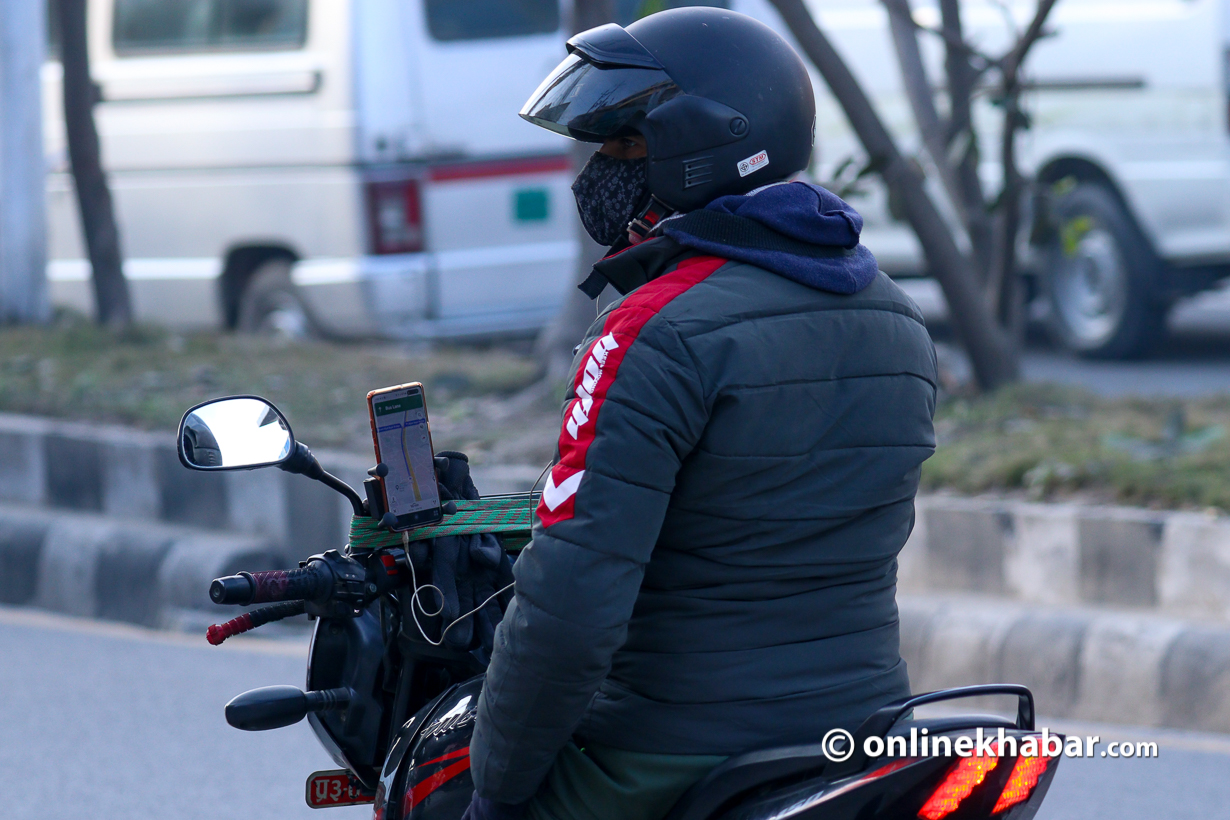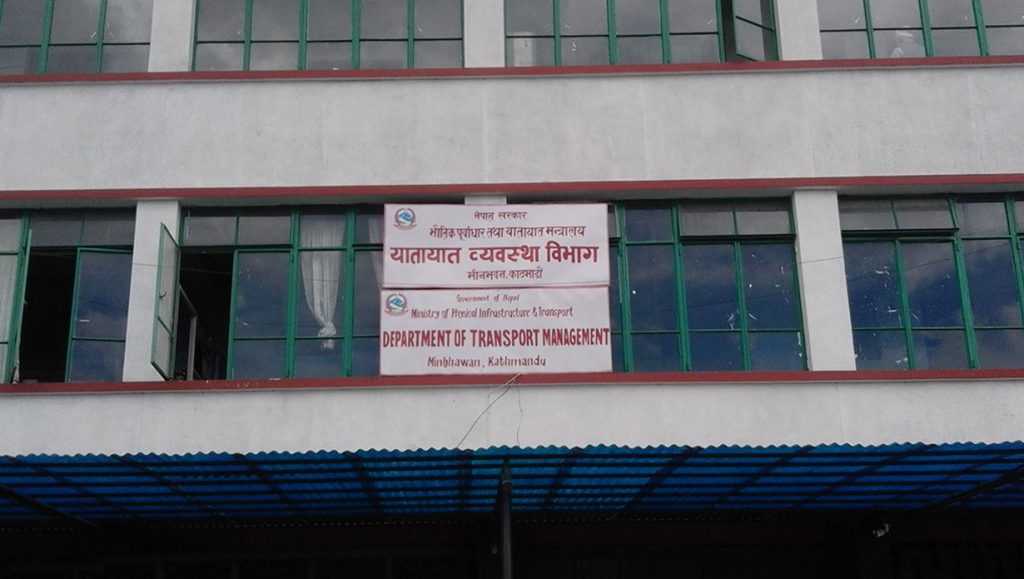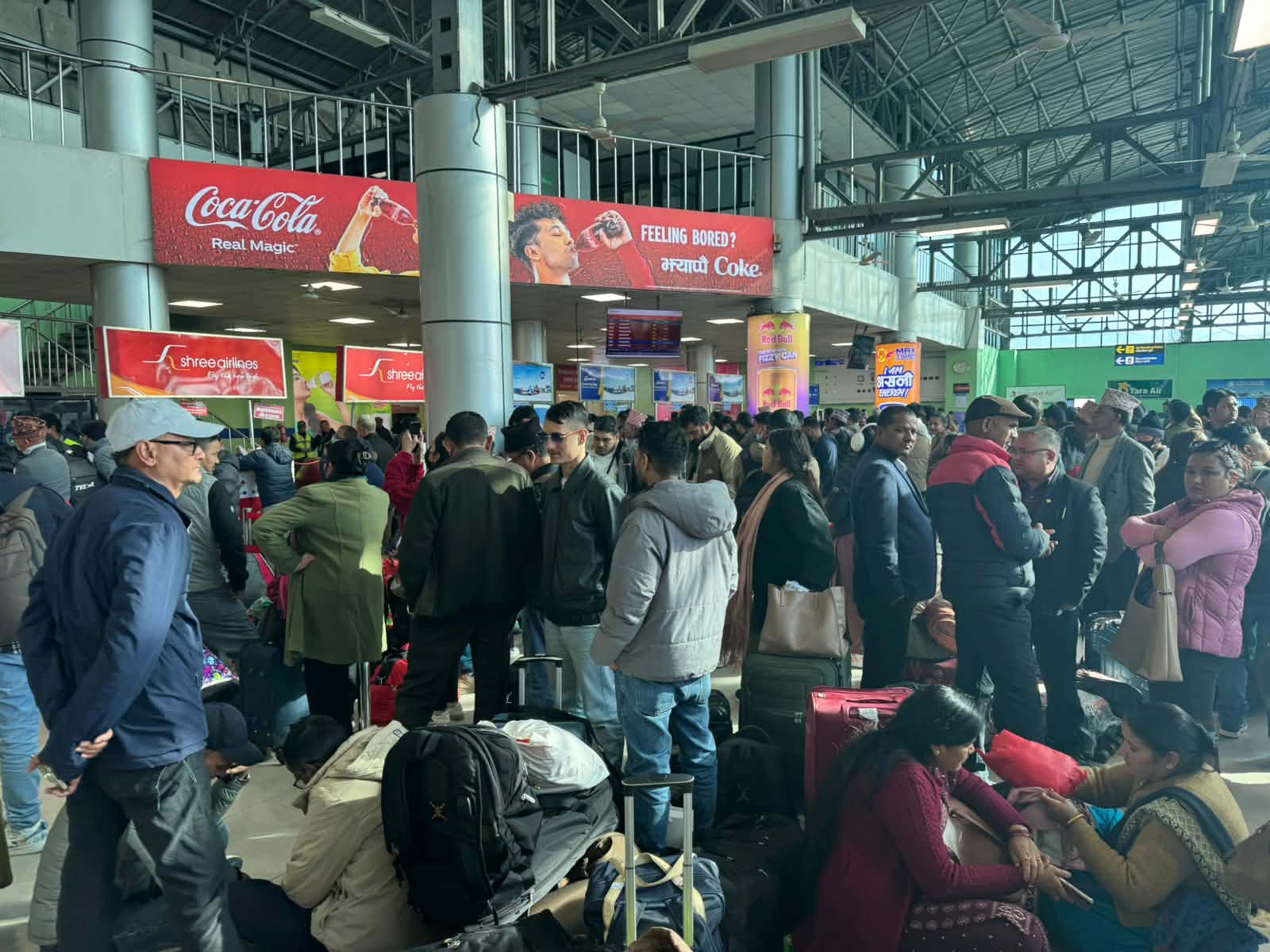
It has been six years since ride-sharing apps have been in use. But the absence of government regulations has resulted in numerous unfortunate incidents associated with ride-sharing apps and services.
In a bid to change that, the government has drafted guidelines for two-wheelers used as public transport. If the draft prepared by the Department of Transport Management will be implemented, both existing and future ride-sharing services will be subjected to government regulation. This move aims to enhance surveillance and ensure that these services operate in compliance with established standards.
Following the hearing of the petition filed by the Nepal Meter Taxi Entrepreneurs’ Association on March 12, 2020, the Patan High Court issued an order to allow the ride-sharing service to continue operating until appropriate laws were established.
Subsequently, the federal government has initiated the process of formulating guidelines to be implemented nationwide for regulating ride-sharing services. This step aims to bring clarity and standardization to the operation of such services across the country.
Based on the hearing of the petition filed by the Nepal Meter Taxi Entrepreneurs’ Association on March 12, 2020, where the Patan High Court gave an order not to stop the ride-sharing service immediately and to allow it to run by making the necessary laws, the federal government has started the process to issue the guidelines to be applied all over the country.
The guidelines are going to be issued according to the provisions of the Traffic Management Regulations.
Here are the things you should know about the draft of guidelines on ride-sharing services and apps.
Standards of service

The proposed guidelines specify service providers must limit their transportation services to a maximum radius of 15 kilometres from the initial point of departure within their licensed operational area. The system should be designed to ensure that services are not provided beyond this designated distance.
According to the guidelines, drivers must have at least one year of driving experience and carry an identity card while on duty. They are also required to wear reflective clothing during nighttime operations.
Likewise, offline ride services are prohibited.
In exceptional circumstances where passengers are unable to use the online platform, drivers are allowed to provide service by manually entering the necessary details into the system. In such cases, drivers must provide passengers with a signed ticket that includes important information such as the passenger’s name, driver’s name, contact number, service provider’s name, vehicle registration number, journey distance, and fare.
The guideline also limits ride-sharing service to a maximum of 12 hours per day, starting from midnight. The 12-hour duration is calculated from the driver’s first login. Automatic logout is suggested to prevent exceeding the time limit.
According to the new guideline for ride-sharing apps, there is a recommendation for service providers and platforms to set up an inter-system information exchange and control system. The purpose of this system is to effectively track and calculate the working hours of drivers who are active on multiple ride-sharing platforms.
Passengers are encouraged to provide ratings on the quality of service through ride-sharing apps. Service provider companies are required to provide a minimum of two days of orientation training covering ride-sharing standards, vehicle safety, and passenger interactions before hiring a driver/rider.
Drivers/riders who do not maintain a minimum 50 per cent rating every four months will need to undergo a one-day refresher training. The guidelines propose that all drivers should receive this refresher training within a one-year timeframe.
Guarantee of safety and insurance

The proposed guidelines mandate that service provider companies track motorcycles/scooters and issue immediate warnings for any route or speed deviations. Furthermore, these vehicles must have comprehensive insurance coverage, including vehicle, driver, passenger, passenger group, and third-party insurance.
The guideline also allows single-passenger service on motorcycles and scooters, excluding children under 10 years old. Mandatory helmet use is proposed for passengers, either provided by the driver or arranged by the passenger themselves.
Fares will increase based on service demand
The directive seeks to keep open the way for ride-sharing apps to raise prices during peak passenger times by adding a surge charge. The minimum fee for services provided by ride-sharing apps will be set by local or state authorities. The initial fare should be determined based on a minimum distance of three kilometres.
The draft guidelines state that the fare can be increased by 50 to 150 per cent of the basic fare, based on factors such as travel distance, time of travel, number of customers, and vehicle availability.
The guideline also states the fare can be paid electronically, with the service provider receiving 80 per cent of the total and the platform receiving 20 per cent.
Customer care service centre
The guidelines aim to hold companies operating ride-sharing apps accountable for addressing complaints and resolving issues during service provision.
The service provider must offer a 24/7 customer care centre to handle complaints from drivers and passengers. Complaints should be submitted through the company’s system, phone, or email. Passengers need to register their complaints within 24 hours of using the service, and the service provider must notify the passenger within three days of receiving the complaint.
If a driver mistreats passengers, causing harm, abuse, or mental distress, passengers have the option to file a complaint with the police, states the new guideline. The proposed guideline also suggests that the service operator will be suspended until the police conduct an investigation and make a decision.
In such cases, if the court finds the driver guilty, they will be permanently disqualified from serving. Passengers who have committed serious offences causing harm to the driver may face a ban from using the service as determined by the companies.
Legal questions remain

The guidelines to regulate ride-sharing apps by the government may face potential legal challenges regarding their legality.
Section 8 (1) of the Vehicle and Transport Management Act 1993 states that private vehicles cannot be used for public transport services. Section 12 of the Act also states vehicles registered for one purpose cannot be used for another. Using this, transport entrepreneurs have time and again opposed ride-sharing apps.
The guidelines that the federal government is attempting to issue without amending the Act may face controversy similar to the situation when the government of Bagmati Province legalised Tootle and Pathao in its Transport Act. This controversial move allowed private vehicles to operate as public vehicles within specified areas, charging a predetermined fare.
This story was translated from the original Nepali version and edited for clarity and length.
























